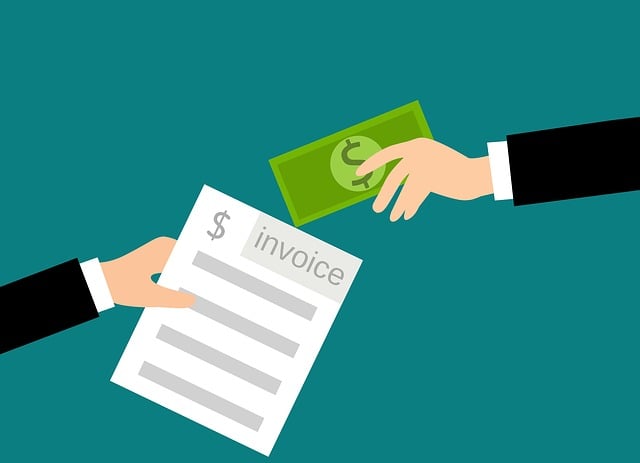Spot factoring is a financial strategy enabling businesses to manage cash flow effectively by selling accounts receivable to third-party factors. It offers immediate access to capital, improved cash flow management, quick funding for receivables, and the ability to expand operations without strict credit limits. When choosing spot factoring or whole ledger factoring (which considers all outstanding invoices), businesses should align their decision with cash flow needs, financial goals, and risk tolerance. Both methods optimize cash flow, but spot factoring provides flexibility, speed, and scalability benefits, making it ideal for rapid capital needs and specific project funding. Choosing the right approach ensures liquidity, supports growth strategies, and enhances overall business cash management.
In today’s fast-paced business landscape, efficient cash flow management is key to success. Spot factoring emerges as a powerful tool, offering targeted financial solutions tailored to individual company needs. This article delves into the intricacies of spot factoring, exploring its benefits in boosting business cash flow and operational efficiency. We compare whole ledger factoring versus select invoicing options and provide a comprehensive guide on optimizing cash flow through strategic factoring, helping businesses make informed decisions for effective cash management.
- Understanding Spot Factoring: Unlocking Targeted Financial Solutions
- Spot Factoring Benefits: Boosting Business Cash Flow and Efficiency
- Comparing Factoring Options: Navigating Whole Ledger vs. Select Invoicing
- Optimize Cash Flow with Strategic Factoring: A Comprehensive Approach
- Choosing the Right Factoring Method: Factors to Consider for Effective Business Cash Management
Understanding Spot Factoring: Unlocking Targeted Financial Solutions

Spot factoring is a powerful financial tool that offers businesses an innovative way to manage their cash flow and optimize their operations. By understanding this process, companies can unlock tailored financial solutions to meet their unique needs. At its core, spot factoring involves selling accounts receivable (AR) to a third-party factor for immediate funding, providing businesses with quick access to capital. This method goes beyond traditional whole ledger factoring, offering a more flexible and targeted approach.
When businesses compare factoring options, they can choose the right spot factoring approach based on their goals. It allows them to focus on core operations while enhancing business cash management. The benefits are clear: improved cash flow, immediate funding for AR, and the ability to scale operations without traditional credit constraints. By optimizing cash flow through spot factoring, businesses can make strategic decisions, invest in growth opportunities, and navigate market fluctuations with confidence.
Spot Factoring Benefits: Boosting Business Cash Flow and Efficiency

Spot factoring offers a range of benefits that can significantly boost business cash flow and operational efficiency. By opting for whole ledger factoring, businesses can unlock immediate access to their invoices and accounts receivable, effectively transforming them into usable cash. This streamlines the financial management process, allowing entrepreneurs and business owners to optimize their cash flow and make strategic decisions with greater agility.
When comparing various factoring options, spot factoring stands out as a powerful tool for businesses looking to enhance their cash management strategies. By choosing the right factoring approach, companies can free up valuable resources, reduce administrative burdens, and focus on core operations. This, in turn, fosters growth and ensures that businesses remain competitive in today’s dynamic market.
Comparing Factoring Options: Navigating Whole Ledger vs. Select Invoicing

When it comes to comparing factoring options, businesses have two primary approaches to consider: whole ledger factoring and select invoicing. Whole ledger factoring involves selling all accounts receivable to a factor, providing immediate cash flow but potentially tying up larger portions of your business’s resources. This method is ideal for companies looking for substantial upfront capital or aiming to optimize their entire cash flow management strategy. On the other hand, select invoicing allows businesses to choose which invoices they want to factor, offering more flexibility and control over their receivables. It’s a suitable choice for those seeking spot factoring benefits, needing quick access to funds for specific projects or unexpected expenses while maintaining autonomy over their accounts.
Choosing the right factoring approach depends on your business’s cash flow needs, financial goals, and risk tolerance. Whole ledger factoring streamlines the process but may limit future flexibility, whereas select invoicing provides adaptability with potentially lower costs and less restriction. By understanding these options, businesses can make informed decisions to optimize cash flow and effectively manage their financial resources in the context of spot factoring benefits.
Optimize Cash Flow with Strategic Factoring: A Comprehensive Approach

In today’s fast-paced business environment, efficient cash flow management is crucial for any company’s success. Spot factoring offers a strategic solution to optimize cash flow and enhance business cash management. By utilizing this approach, businesses can transform their accounts receivable into immediate funds, ensuring they have the capital needed to drive growth and seize opportunities. Whole ledger factoring, as a comprehensive option, provides even greater flexibility by considering all outstanding invoices, allowing for a more extensive pool of working capital.
When comparing different factoring options, it’s essential to weigh the benefits of spot factoring against traditional financing methods. Choosing the right factoring approach can streamline financial processes and provide significant advantages in terms of speed, accessibility, and scalability. This method is particularly attractive for businesses seeking a flexible and efficient way to manage their cash flow, enabling them to stay ahead of expenses and make strategic investments.
Choosing the Right Factoring Method: Factors to Consider for Effective Business Cash Management

Choosing the right factoring method is a strategic move for effective business cash management. Spot factoring offers immediate benefits by providing access to funds within 24 hours, ideal for rapid capital needs. However, not all businesses are suitable candidates for this approach due to its reliance on short-term transactions. Whole ledger factoring, on the other hand, suits established companies with consistent and substantial sales volumes. It involves factoring every invoice from a business’s entire ledger, enabling more extensive financial flexibility.
When comparing factoring options, consider your business’s cash flow goals and patterns. Evaluate each method’s impact on your overall cash position, repayment terms, and potential fees. Opting for the right factoring approach can help optimize cash flow, ensuring your business has the liquidity to seize opportunities, manage operational expenses, and support growth strategies.
